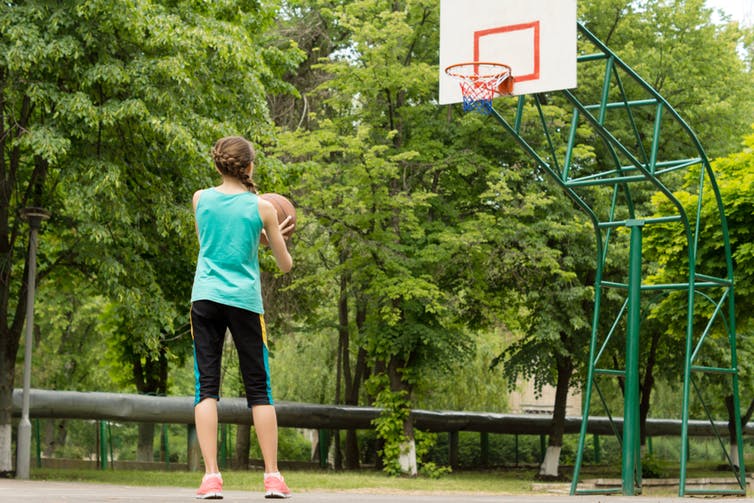
School bags strewn across the floor can become a trip hazard or interfere with evacuations in the case of fire or other emergency. Clutter is also a problem, as a space that is cluttered distracts learners, particularly early primary-age students. Extreme clutter reduces student engagement and increases stress in the classroom.
Read the Term 4 edition of School News HERE
For teachers too, clutter becomes overwhelming and can disrupt lessons and waste time, as students struggle to find laptops, book bags and stationery. Vermin, mould and theft can also become issues if piles of belongings including backpacks, lunchboxes, hats and blazers are regularly left around the school grounds and in classrooms.
For student safety and wellbeing, a designated storage spot for school bags can also help prevent back injuries. Research into the risks associated with heavy school bags on growing children and young people are well-documented.
In fact, a Chiropractors’ Association of Australia study found that 90 per cent of school children exhibited bad posture when carrying their school bag. The research, which was carried out at 340 schools across Australia, also found that 75 percent of students were not using the ergonomic features of their backpacks, which could help prevent spinal damage. Many students were found to be carrying an average of 17 percent of their body weight on their back, despite the recommended limit of 10 per cent.
CAA Spokesperson Dr Billy Chow said the results are a major concern. “Despite the increased use of technology in schools to assist learning, schoolchildren are still overloading their backpacks with textbooks, sports and other gear or simply not wearing them in the correct way,” he said. “Putting too much stress on a child’s back at such an important stage of growth and development will result in serious spinal problems immediately and later on in life.”

Innovative bag rack design
Bag rack design and bag storage solutions have evolved in recent years. A range of options are now available to suit space restrictions, cope with daily use and rough handling, work with the design considerations of your school, and fit within school budgets.
Modern-day bag rack designs are sleek and can blend with the design aesthetic of almost any school space. Suitable for a range of grades and classroom sizes, bag racks can come in multiple tier levels to allow a streamlined storage solution, minimising the space required to store bags and backpacks during the school day.
When offered in durable materials such as aluminium or plastic, bag racks are a hygienic solution for schools and can be cleaned and disinfected when required.
To ensure the longevity of your storage solution, robust and durable materials that are also low maintenance are key. Eco-friendly options made from recycled or sustainable materials are also a popular choice for schools looking to solidify their commitment to sustainability.

To enhance the longevity of bag racks, innovative coatings are an important consideration. Zinc powder-coated finishes offer excellent protection against rust, particularly important for bag racks stored in an open-air or moist environment.
Antimicrobial coatings are another option that has gained popularity in recent years. These coatings can inhibit the growth of bacteria and viruses on surfaces, promoting a more hygienic environment for students and staff.
Many of these finishes are often available in a range of colours, allowing schools to match their bag racks with their interior design or school colours.
Hooks have long been a tried-and-true method for organising school bags. Hooks are cost-effective, easy to install, and are particularly well-suited to schools with limited storage areas. Importantly, hooks allow school bags to be kept off the ground while allowing students quick and easy access when required.
The versatility of hooks also allows them to be used to hang up school hats or jackets when not in use. Compared to older designs, many modern-day hooks are weight tested up to 100kg, allowing schools a durable option that can withstand the pressure of any school bag.
From the industry insiders
Len Hyde, Managing Director at Linc Furniture said space, practicality, safety and cost will impact school decisions around bag storage.
“The benefits of having appropriate school bag storage can be substantial but are often overlooked. Port racks worked well when kids carried hard suitcases. Lockers made sense in principle but in practise are rarely used in the way they were designed.
“Simple bag hooks create more space, improve traffic flow and mobility, save money with easy maintenance and cleaning, reduce pest problems, and meet all statutory requirements, and all building and design regulations. This is without mentioning the aesthetic benefits of colourful hooks and clutter-free spaces,” Mr Hyde said.
“One of the biggest mistakes schools tend to make is not taking the time to understand that there are better options available to accommodate the storage requirements of today’s schools.
“It’s a mistake made by many, including those that remotely manage or design new schools. School staff aren’t always familiar with the requirements of the National Construction Code, but they are responsible for providing safe, compliant work spaces.”
Mr Hyde said that building codes state that walkways and corridors need to provide a minimal accessible route of 1500mm in schools where corridors are less frequented by end users, and 1800mm where corridors are used frequently as is the case in most school corridors and bag storage areas.
“Conventional bag racks generally extend 500 to 600mm into a walkway, and they take up the same amount of space occupied or not. Meanwhile, bag hooks fixed to a wall extend no more than 100mm into the same space, facilitating traffic flow and minimising congestion.”







